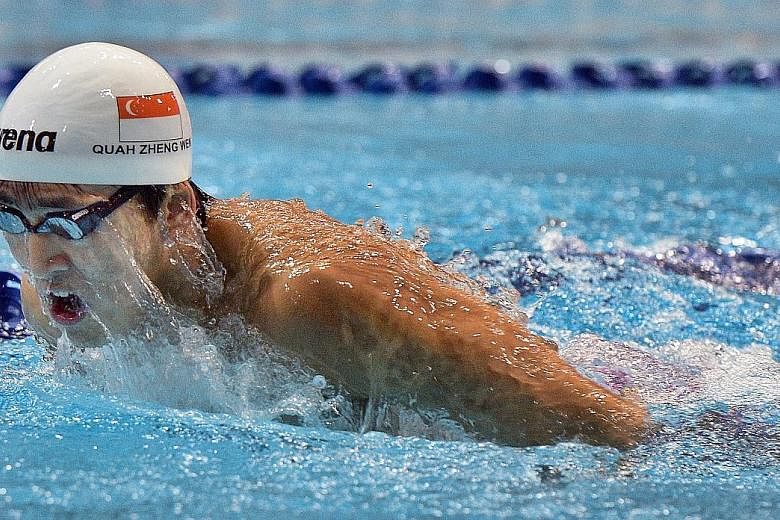A clutch of fast times and personal bests (PBs) can be expected when the Singapura Finance 47th Singapore National Age Group (Snag) Championships take place next month.
But not just because the stakes at the OCBC Aquatic Centre are higher than ever since the event is the last Olympic qualifier for local swimmers hoping to earn a ticket to the Rio de Janeiro Games.
Those on the National Training Centre (NTC) squad are also well aware that having been through a handful of time trials and meets regarded as "swim throughs", the March 16-20 meet will be the first of the season where they are expected to step up.
"Swim throughs", where athletes compete in meets without cutting down on training load or tapering, is a new concept to the Republic's elite swimmers. It is part of a big-picture strategy to give them the ability to plan their schedule better, take breathers and race knowing when is the right time to peak.
"We need to change the culture slowly," national assistant head coach Gary Tan told The Straits Times yesterday. "To be able to throw ourselves out there and race as hard as we can, even when you're training very hard and in a very tired state."
Swimmers have too often believed that they are expected to clock best times at every meet.
"In reality, it doesn't work that way," said Tan, a former national swimmer and Olympian. "We use swim-through meets to see where we can plug the gap in our races, what we need to work on, and when the main events come round, that's when we talk about tapering and shaving. It's about understanding yourself better, and knowing and being able to step up when it really counts."
That is not to say that good performances are out of the question, even when swimmers are not conventionally tapered.
At last month's Arena Pro Swim Series in Texas, for instance, NTC swimmers competed in Austin following a taxing three-week training camp in Florida before the meet. Even on a full training load, Quah Zheng Wen won the men's 200m butterfly 'A' final, albeit in a depleted field and in a time more than a second off his PB.
Similarly, at last month's Singapore Swimming Association time trials, Glen Lim set a new national Under-14 1,500m freestyle record.
This strategy requires parents to understand and trust coaches to do what is necessary and right, and also buy-in from swimmers.
Swimmer Pang Sheng Jun said: "We have a lot more time trials and competitions now and it's through these that we can learn from the mistakes we make, so when the big meets come round, our minds already know what to do."
In the long run, a more systematic competition calendar and better understanding of racing will aid a sustainable development of top swimmers who can peak at the right time.
Said Tan: "The hope is that come Snag, the swimmers will be able to do their best times and clock times closer to the Olympic qualifying marks. Anything can happen but that's what we envision the system to be, so they can step up when they want to."


